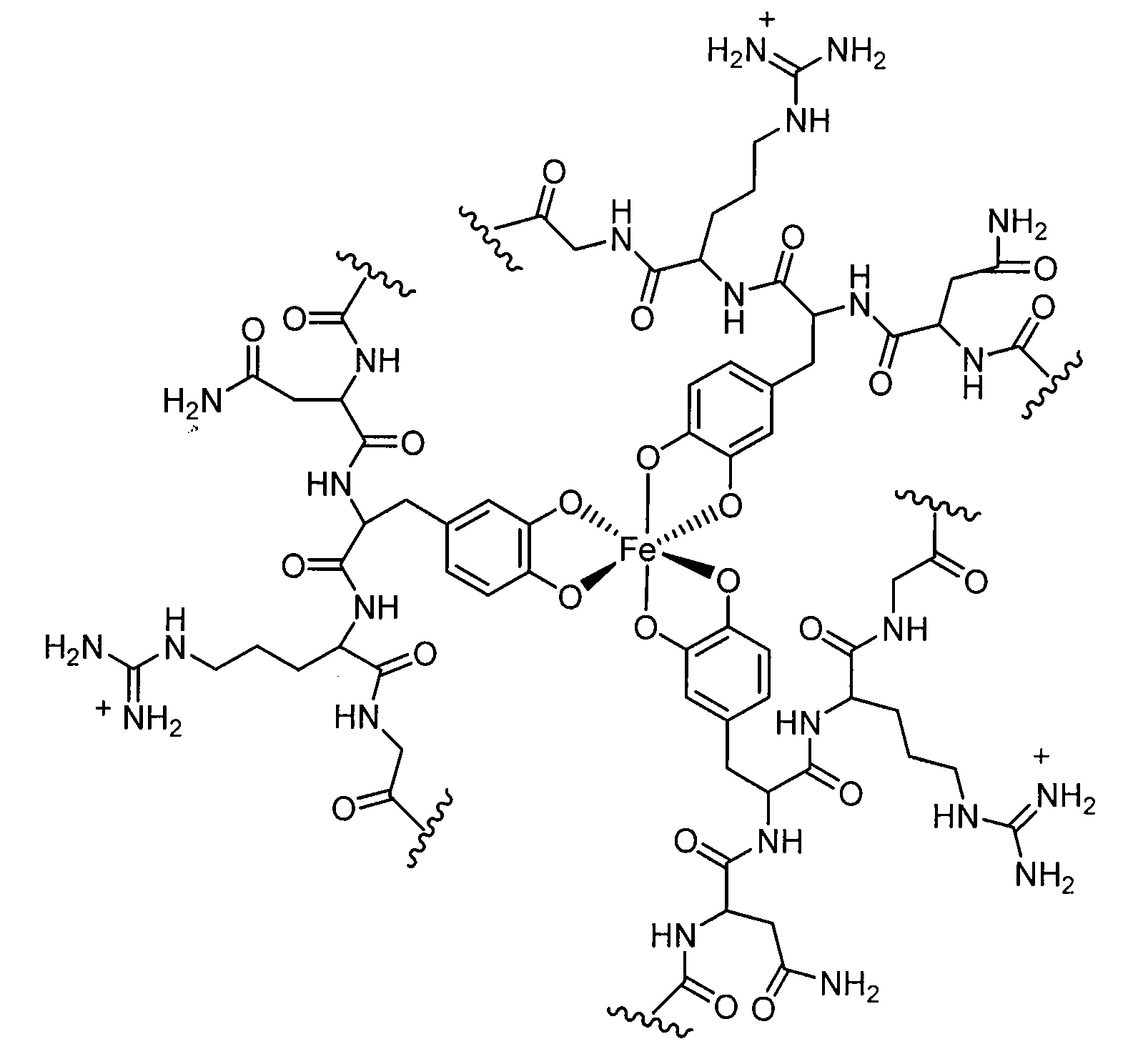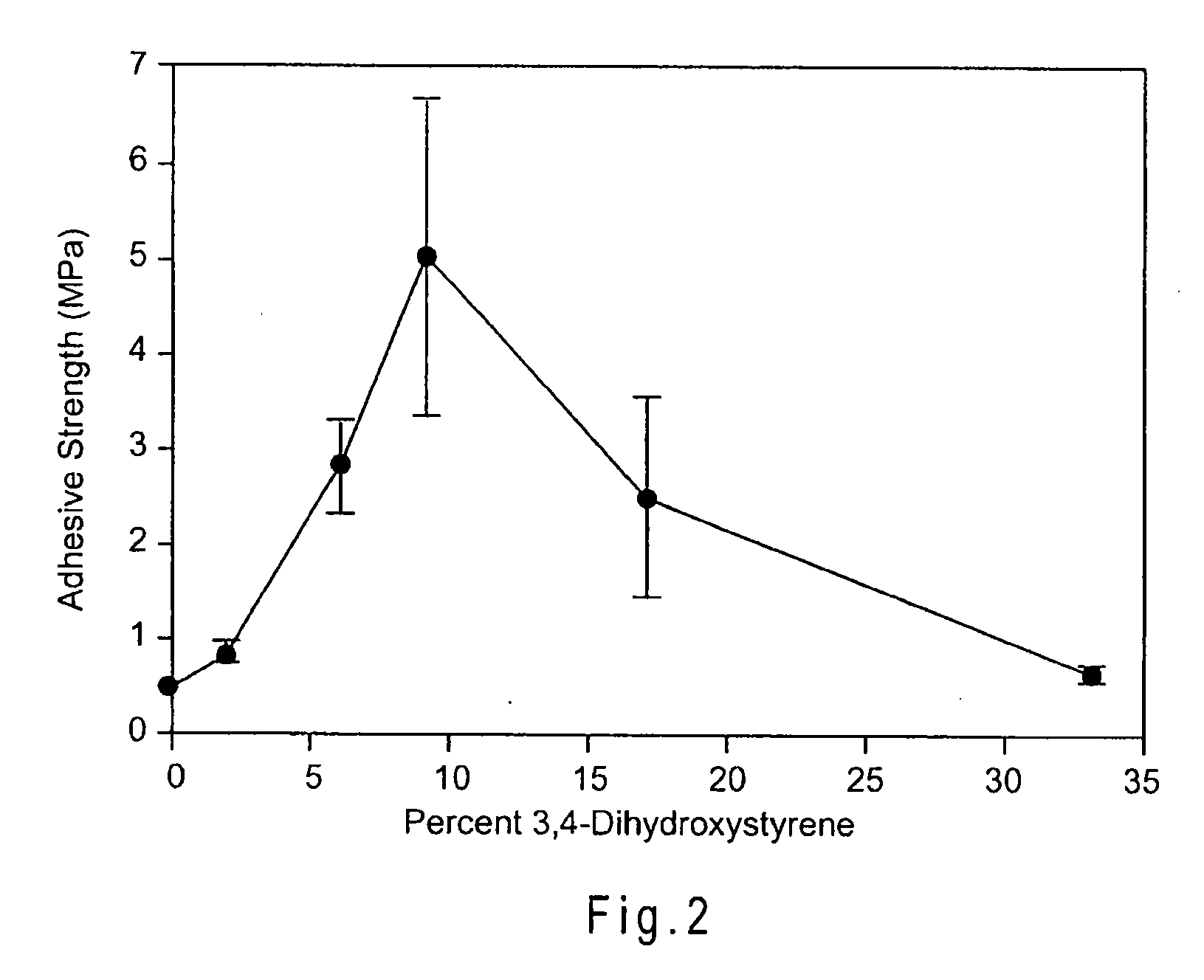Cross-Linkable Polymeric Compositions
a polymer composition and crosslinking technology, applied in the field of crosslinkable polymeric compositions, can solve the problems of weak bonding strength, large mechanical stress of parts, and inability to meet all these requirements well
- Summary
- Abstract
- Description
- Claims
- Application Information
AI Technical Summary
Benefits of technology
Problems solved by technology
Method used
Image
Examples
examples
[0072]The following examples provide a detailed illustrative description of the disclosed molecules. The examples in no way restrict the technical scope of the present invention. The examples merely illustrate how a wide array of properties, such as adhesive strengths, may be achieved by varying particular elements of the system. These examples are not meant to be limiting and other systems and compositions are contemplated.
examples 1-7
[0073]Examples 1-7 which follow provide one exemplary polymer synthesis and characterization system. Other exemplary systems will be provided to illustrate the diversity of the system. These examples are not meant to be limiting, other systems and compositions are contemplated.
example 1
[0074]The following description provides one of many possible mechanisms of polymer synthesis. Synthesis of the disclosed molecules is not limited to the specific compositions or methods described below. Other methods, equipment, and reagents may be utilized to achieve polymer synthesis.
[0075]Styrene may be inhibited, for example, with approximately 10-15 ppm of 4-tert-butylcatechol. Polymer synthesis may begin with monomer purification. Column chromatography may be used to separate 4-tert-butylcatechol inhibitor from styrene and the hydroquinone inhibitor from 3,4-dimethoxystyrene. A glass tube may be packed with, for example, ⅛ in. of cotton, ⅛ in. of sand, 3 to 4 inches of oven dried alumina, and ⅛ in. of potassium carbonate. Each monomer may be added to its own column and allowed to elute. Care may be taken to prevent the red color present on the column elute into the collection flask. The inhibitor may be removed within approximately 12 hours prior to polymerization and may be ...
PUM
| Property | Measurement | Unit |
|---|---|---|
| Tg | aaaaa | aaaaa |
| Tg | aaaaa | aaaaa |
| concentrations | aaaaa | aaaaa |
Abstract
Description
Claims
Application Information
 Login to View More
Login to View More - R&D
- Intellectual Property
- Life Sciences
- Materials
- Tech Scout
- Unparalleled Data Quality
- Higher Quality Content
- 60% Fewer Hallucinations
Browse by: Latest US Patents, China's latest patents, Technical Efficacy Thesaurus, Application Domain, Technology Topic, Popular Technical Reports.
© 2025 PatSnap. All rights reserved.Legal|Privacy policy|Modern Slavery Act Transparency Statement|Sitemap|About US| Contact US: help@patsnap.com



